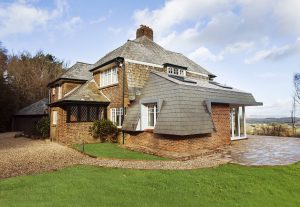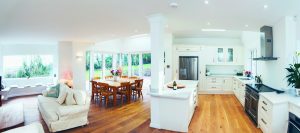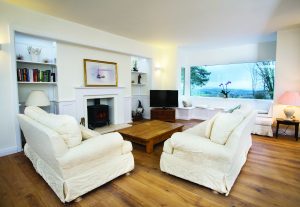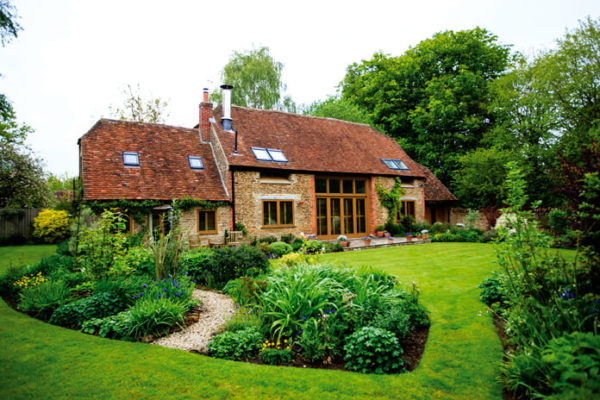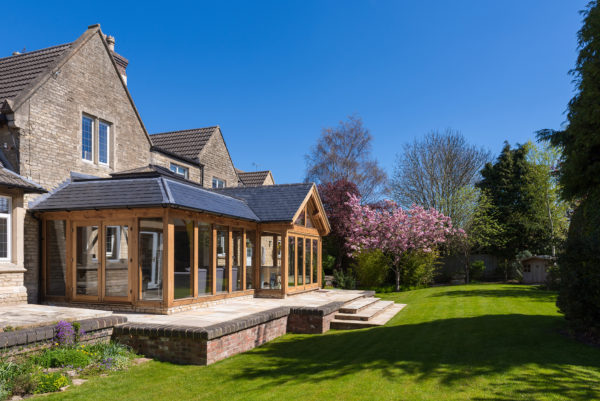Light-Filled Extension to an Arts & Crafts Home
When Steve and Jane Morton first stood inside this Arts & Crafts style property in Devon, it wasn’t love at first sight – at least not until they wandered amongst the brambles at the bottom of the overgrown garden. “I climbed up on the back fence and cried out to Jane, ‘look, you can see the sea from here.’ Situated on a hill, 100m above sea level, the house has incredible views of the countryside and the coast of Lyme Regis,” says Steve.
The couple had grown tired of the bustle of suburban life. “The more we visited our two daughters in the West Country, the clearer it became to us that relocating to Devon would be a good move,” says Steve. They initially settled on a plot where they planned to demolish the existing house and self build in its place.
“With a view to creating a home from scratch, I enrolled on a course at the National Self Build and Renovation Centre (NSBRC) to learn about the basics of project management,” says Steve. However, their plans were scuppered when the plot purchase fell through. Heading back to the drawing board, they decided a self build project wasn’t right for them after all.
- NamesSteve & Jane Morton
- LocationDevon
- ProjectRenovation & extension
- StyleArts & Crafts
- Construction methodBrick & Block
- House cost£725,000
- House size253m² (including 37m² extension)
- Project cost£201,800
- Total cost£926,800
- Project cost per m²£798
- Construction time16 weeks
Whilst re-evaluating their original criteria, they decided to go back to the beginning and looked over dwellings they had previously dismissed. “We rediscovered this property in our initial no-pile,” says Steve. “We had first viewed it on a cold and rainy day. The house looked grey and smelt damp, plus the garden was very overgrown – it felt lost to the woods. But every window at the back had an incredible view that stretched on for miles over countryside and coastline. This was a winning factor for us.”
Project planning
Having purchased the site, Steve and Jane lived in the building for eight months before making any changes. During this time they identified how best to improve and enhance the property.
Built in 1935, the house was designed by its architect owner, who drew on the Arts & Crafts style. A small, dated and dark kitchen was situated at the north end of the dwelling. The Mortons planned to relocate this zone to the southern elevation. They have replaced the original lounge and transformed the previous kitchen into a study.
Eager to add further space to their new home, the couple employed their architect son-in-law, Robert Hilton, to design a single-storey extension that reflects the style of the rest of the house.
“Robert came up with some great ideas,” says Steve. “With his help, we managed to transform the 27m2 room into an open-plan design of 64m2, effectively more than doubling the size.” The structural addition benefits from a sculptural roof and vaulted ceiling, which allows plenty of natural light into the large room.
The building work began during a tropical heat wave in August, which was followed by solid rain from the end of October until Christmas. “Our foreman, Kevin Hammett, was outstanding and very calm with any issues that cropped up. He made sure the materials arrived on time and scheduled progress in such a way that the builders and sub-contractors were always busy,” says Steve. “The NSBRC self build course prepared us for making urgent decisions at the drop of a hat, which was great since we lived on site throughout the project.”
Renovate & restore
The transformation of the original property included the addition of underfloor heating and new flooring, as well as re-wiring and re-plumbing. Further structural works involved taking out the old kitchen chimneybreast and replacing lath walls with fresh plaster.
“The large chimneystack – which was probably 15ft high – had to be taken down to roof level. This left the structure needing to be reinforced with steel,” says Steve. A dividing wall in the entrance hall was removed to widen the corridor and two doorway openings were doubled in size and fitted with glazed doors, to allow optimum amounts of natural light to flow throughout the ground floor.
The relocation of the kitchen has presented huge advantages when it comes to gaining sunlight, and the neutral interior palette helps to make the most of this element. “I’m so pleased with the finished result – it works really well,” says Steve. “Jane prefers the clean, minimal look and we both wanted a low-maintenance kitchen. We selected painted wooden units from Magnet and teamed them with quartz worktops.”
Another key concern for Steve was that the design should conserve energy wherever possible. This has been achieved thanks to LED lighting, thermal insulation in the walls and floors, and the inclusion of double-glazing throughout the property.
Reaping the rewards
It had been a lifelong dream of Steve and Jane’s to create a bespoke home and the result certainly fits the bill. “Living on site meant we witnessed the whole transformation,” says Steve. “At first not much seemed to be happening, and then suddenly it all started to take shape, with rooms being released back to us one by one. We are delighted with the finished product.”
By knowing exactly what they wanted, Jane and Steve were able to approach their project with a rigid strategy that ensured it all came together as initially planned. They were brave to take on such an overgrown site, but the hard work has definitely paid off.
“It turned out to be an excellent find – some of the local tradesmen who have lived and worked in this area their whole lives would stare in disbelief at the amazing views from this site,” says Steve.
Although they adore their revamped property, the couple are open to the idea of doing another project. “We loved our previous home (a flat pack structure that was always incredibly warm, energy efficient and light) and would have moved it down here if we could,” says Steve.
“I’d jump at the chance to build a highly insulated package house from scratch around here, perhaps closer to the beach. But for now, with our daughters nearby, we couldn’t be happier. It’s great to be able to watch our grandsons play in our huge garden – they have so much fun chasing imaginary bears hiding in the trees.”
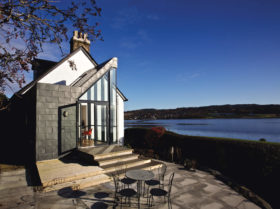
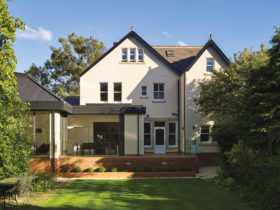






























































































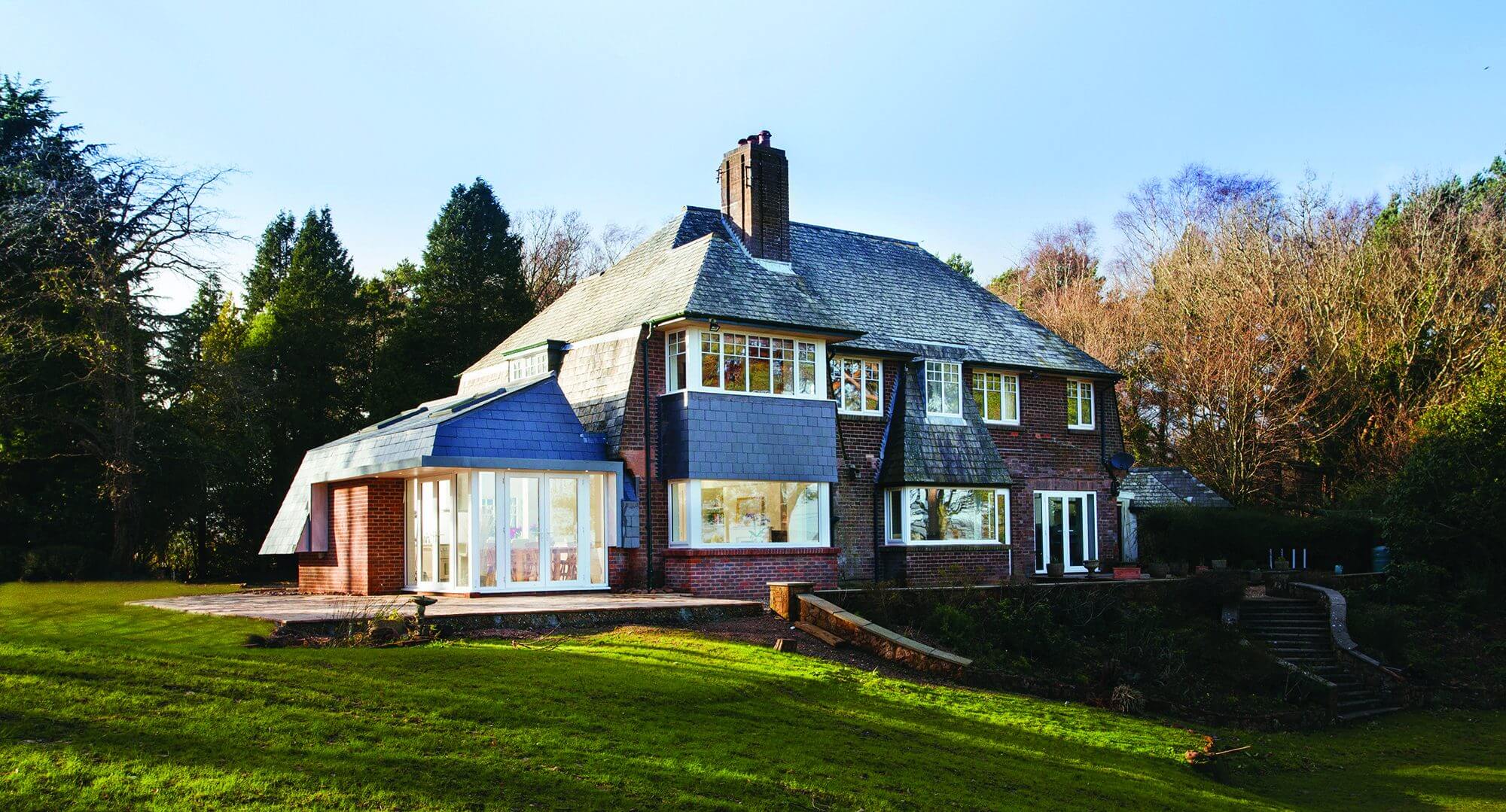
 Login/register to save Article for later
Login/register to save Article for later
